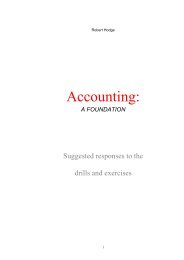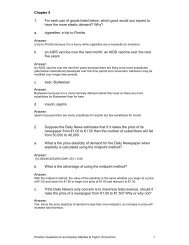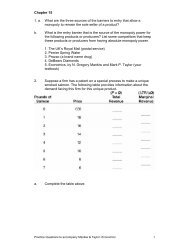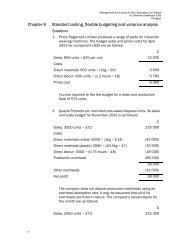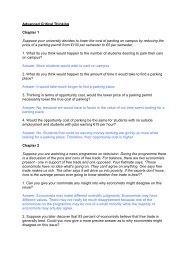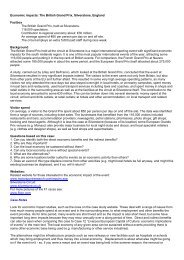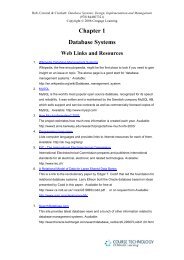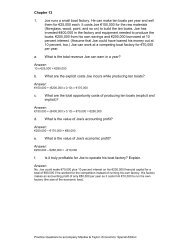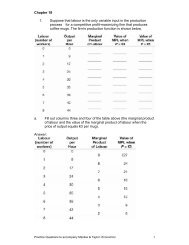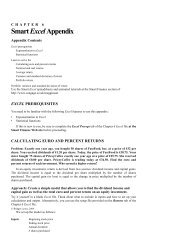Practice Questions Chapter 1 1. People respond to incentives ...
Practice Questions Chapter 1 1. People respond to incentives ...
Practice Questions Chapter 1 1. People respond to incentives ...
- No tags were found...
Create successful ePaper yourself
Turn your PDF publications into a flip-book with our unique Google optimized e-Paper software.
a. Plot Peter Painter's cost in Exhibit 2.Exhibit 2b. If the price of painting apartment houses is €2000 each, how many willhe paint? What is the value of his producer surplus?c. Suppose the price <strong>to</strong> paint apartments rises <strong>to</strong> €4000 each. How manyapartments will Peter choose <strong>to</strong> repaint? What is the value of hisproducer surplus?d. What happened <strong>to</strong> Mr. Painter's producer surplus when the price <strong>to</strong>paint apartments rose? Why?3. Use the information about willingness <strong>to</strong> pay and cost from (1) and (2)above <strong>to</strong> answer the following questions.a. If a benevolent social planner sets the price for painting apartmenthouses at €5000, what is the value of consumer surplus? Producersurplus? Total surplus?b. If a benevolent social planner sets the price for painting apartmenthouses at €1000, what is the value of consumer surplus? Producersurplus? Total surplus?c. If the price for painting apartment houses is allowed <strong>to</strong> move <strong>to</strong> its freemarket equilibrium price of €3000, what is the value of consumersurplus, producer surplus, and <strong>to</strong>tal surplus in the market? How does<strong>to</strong>tal surplus in the free market compare <strong>to</strong> the <strong>to</strong>tal surplus generatedby the social planner?<strong>Practice</strong> <strong>Questions</strong> <strong>to</strong> accompany Mankiw & Taylor: Economics 18



